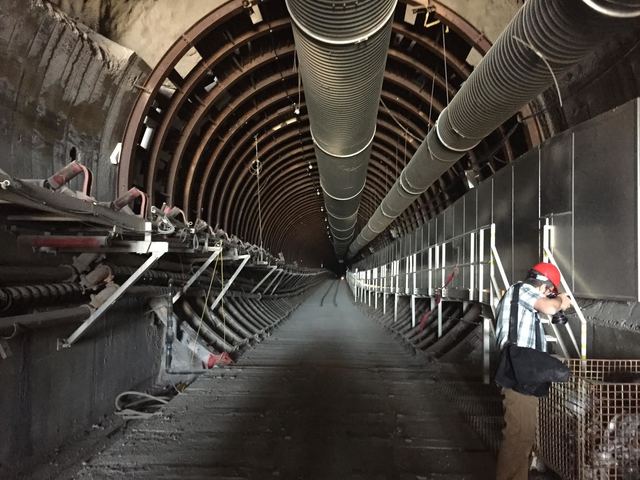
The Department of Energy’s new interest in a using a consent-based siting approach for nuclear waste storage and disposal facilities doesn’t change Nevada’s opposition to Yucca Mountain, state officials said in a report.
The state of Nevada submitted comments on the draft report titled “Designing a Consent-based Siting Process: Summary of public input” that was published in the Federal register on Sept. 15.
As part of the first phase of the consent-based siting effort, the DOE is engaging with the public and interested parties to learn what elements are important to consider when designing a consent-based siting process.
The comments on the draft report submitted by the state of Nevada apply to the two tasks planned by the DOE for December 2016.
These tasks include releasing an initial draft of a consent-based siting process and issuing a draft report on siting considerations for interim storage and geologic disposal facilities for public comment.
“We believe DOE should recommend that Congress enact a new statutory basis for binding written agreements between DOE and state, local and tribal governments that consent to host nuclear waste storage and disposal facilities,” officials said in a letter.
In a letter, Nevada officials urge DOE to support the approach taken in the Nuclear Waste Informed Consent Act, legislation introduced by Sen. Harry Reid and Sen. Dean Heller.
The Nuclear Waste Informed Consent Act permits the Nuclear Regulatory Commission (NRC) to authorize construction of a nuclear waste repository only if the Secretary of Energy has secured written consent from the governor of the host state, affected units of local government and affected Indian tribes.
The act ensures that Nevada and every other state has a say in the process if they are considered for a nuclear waste repository.
Commercial electricity generation has produced approximately 75,000 metric tons of spent nuclear fuel at the end of 2015 and continues to generate spent nuclear fuel at a rate of about 2,000 tons per year.
Most of the spent nuclear fuel and high-level radioactive waste are currently stored at the locations where they were generated.
In 1987, Yucca Mountain was initially chosen as the only suitable site, however, in 2009, DOE determined that a geologic repository at the Yucca Mountain was unworkable. The project was mothballed by the Obama administration in 2009.
The DOE is meanwhile moving forward with an integrated waste management system and wants to use a consent-based approach to siting that is based on collaboration with the public, stakeholders and governments at the local, state and tribal levels.
As outlined in its 2013 strategy, the DOE is planning for an integrated waste management system to transport, store, and dispose of spent nuclear fuel and high-level radioactive waste. The system will consist of a set of nuclear waste facilities, each serving a specific purpose to address the challenges of safely managing both spent nuclear fuel and high-level nuclear waste.
The Secretary of Energy should be required to obtain written consent from any potential host state and county, adjacent county impacted by transportation, and affected Indian tribe before expending any funds from the Nuclear Waste Fund for repository construction, officials said in comments.
Additionally, officials said new federal legislation will be needed to affirm the regulatory basis for the siting, licensing, operation and closure of nuclear waste storage and disposal facilities.
“The DOE draft report should include a commitment to early consultation with the Nuclear Regulatory Commission and Environmental Protection Agency on the urgent need for safety standards and regulations to support a new repository siting process that relies on early public confidence to make informed consent possible from potential host jurisdictions and communities,” officials said.
Transportation impacts also should be addressed in the draft consent-based siting process and the draft report on siting considerations, officials said.
“We believe that new federal legislation will be needed to address the radiological impacts and social impacts of transporting spent nuclear fuel and high-level radioactive waste,” officials said.
The DOE plans to develop and implement the consent-based siting process in multiple phases, according to the documents.
The first phase involves engaging with the public and interested parties to learn from them what elements to consider when designing a consent-based siting process. In the second phase, DOE will focus on designing a consent-based siting process to serve as a framework for collaborating with potentially interested host communities.
Contact reporter Daria Sokolova at dsokolova@pvtimes.com. On Twitter: @dariasokolova77